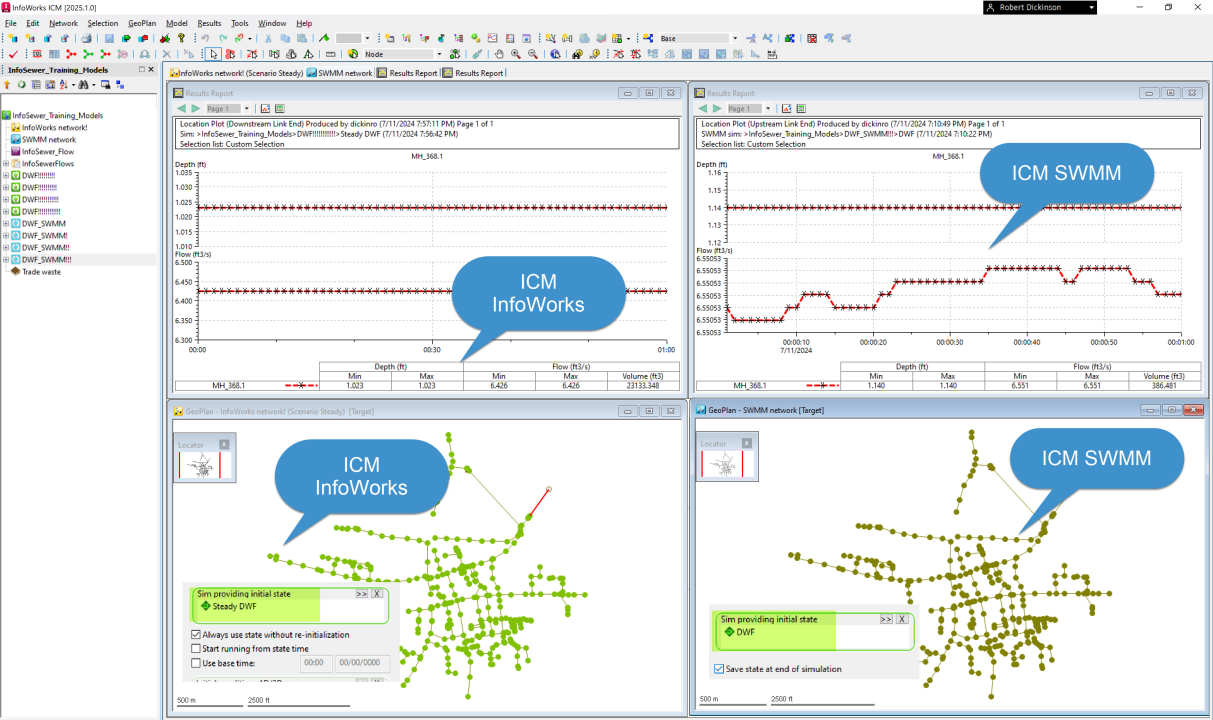
Navigating the Landscape of Hydraulic Modeling: A Comparative Study of InfoSewer, ICM InfoWorks, and ICM SWMM for Steady State Models
Robert Dickinson
Autodesk Water Technologist for Storm Sewer and Flood | Expert in ICM InfoWorks/SWMM/Ruby | 18 Years at Innovyze/Autodesk | 51 Years with EPASWMM | Autodesk EBCS | SWMM5+
This article explores the interoperability and comparative performance of three hydraulic models: InfoSewer, ICM InfoWorks, and ICM SWMM.
We begin with a core model developed in InfoSewer for training purposes. We then guide you through a series of transformations and comparisons:
Throughout this process, we uncover valuable insights into each platform's strengths and limitations. Notably, ICM InfoWorks provides a more accurate approximation of the steady-state condition compared to SWMM.
领英推荐
Ruby scripting for cn vs bn networks
cn = WSApplication.current_network
bn = WSApplication.background_network
# Retrieve hw_subcatchments from cn
cn_subcatchments = cn.row_object_collection('hw_subcatchment')
# Retrieve hw_node from bn
bn_nodes = bn.row_object_collection('sw_node')
# Create a hash map for bn base_flow by node_id
bn_base_flows = {}
bn_nodes.each do |node|
bn_base_flows[node.node_id] = node.base_flow
end
# Initialize totals
total_trade_flow = 0.0
total_base_flow = 0.0
# Compare trade_flow from cn to base_flow from bn using node_id
cn_subcatchments.each do |subcatchment|
node_id = subcatchment.node_id
trade_flow = subcatchment.trade_flow
if bn_base_flows.key?(node_id)
base_flow = bn_base_flows[node_id]
# Ensure trade_flow and base_flow are not nil
trade_flow = trade_flow.nil? ? 0.0 : trade_flow
base_flow = base_flow.nil? ? 0.0 : base_flow
if base_flow + trade_flow != 0
puts "Node ID: #{node_id}, Trade Flow: #{format('%.5f', trade_flow)}, Base Flow: #{format('%.5f', base_flow)}"
end
# Update totals with nil checks
total_trade_flow += trade_flow unless trade_flow.nil?
total_base_flow += base_flow unless base_flow.nil?
else
puts "Node ID: #{node_id} not found in bn"
end
end
# Print totals
puts "Total Trade Flow: #{total_trade_flow}"
puts "Total Base Flow : #{total_base_flow}"
Closing Note:
Thank you for reading these articles. I appreciate your engagement and support. Thank you again, and I hope you'll join me on this ongoing journey of learning and discovery. Until next time!
The articles in this newsletter highlight temporal asymmetries. They discuss topics that, while only universally relevant at some times, become crucial for those in need. These pieces are resources, and they are ready to let you know and help when specific circumstances arise.